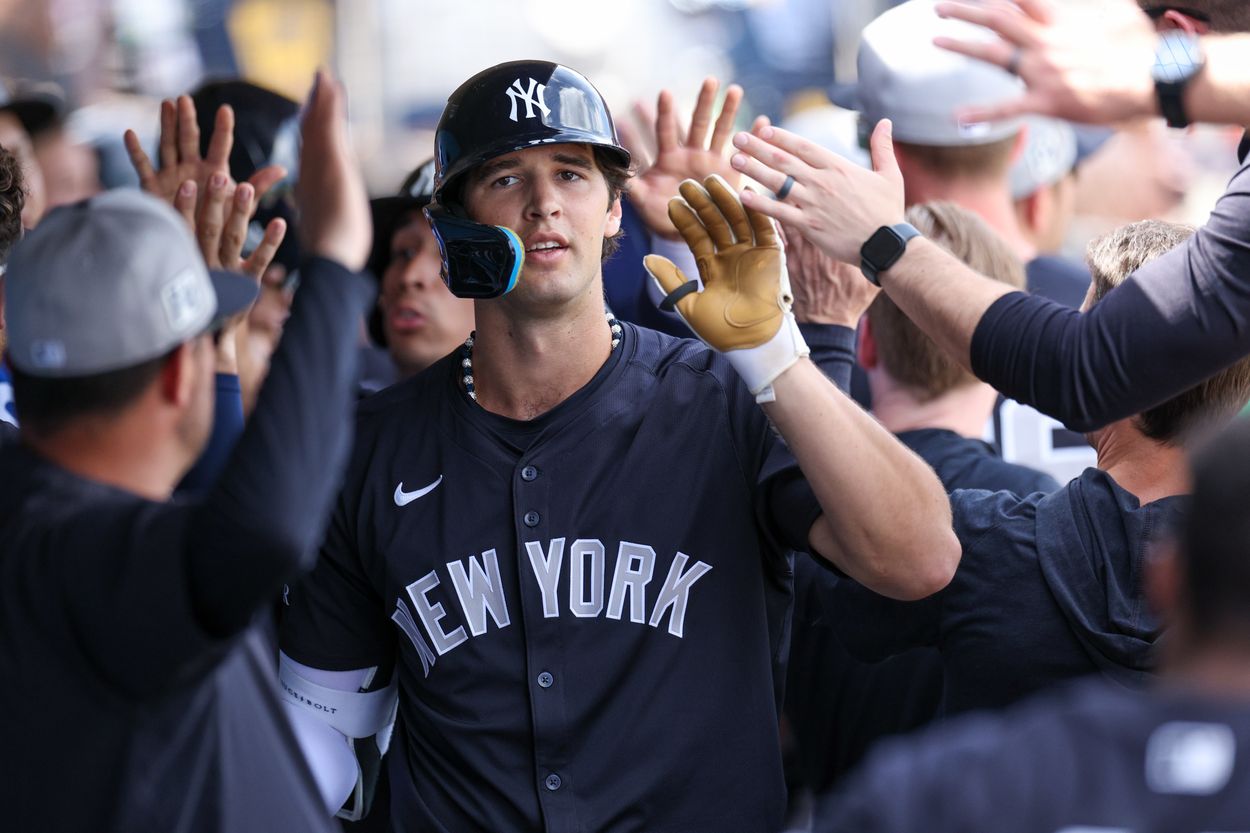
The New York Yankees are through their first month of the 2025 season, and so are their Minor League affiliates, who have had some strong performances. It would be far more exciting if this list had a ton of movement on it from my original top 30 list before the season, but that wouldn’t make for responsible prospect evaluations. There are some changes as a result of graduations, with both Will Warren and Jasson Dominguez opening up top 10 spots.
It’s a farm system that’s still trying to rebuild its value after a wave of trades and injuries crushed its depth, but the early signs from the season have signaled that there are some future big leaguers in this group.
ALSO READ: Yankees’ top prospect continues to excite with excellent start in 2025
#10. Chase Hampton – Previous Rank: #5
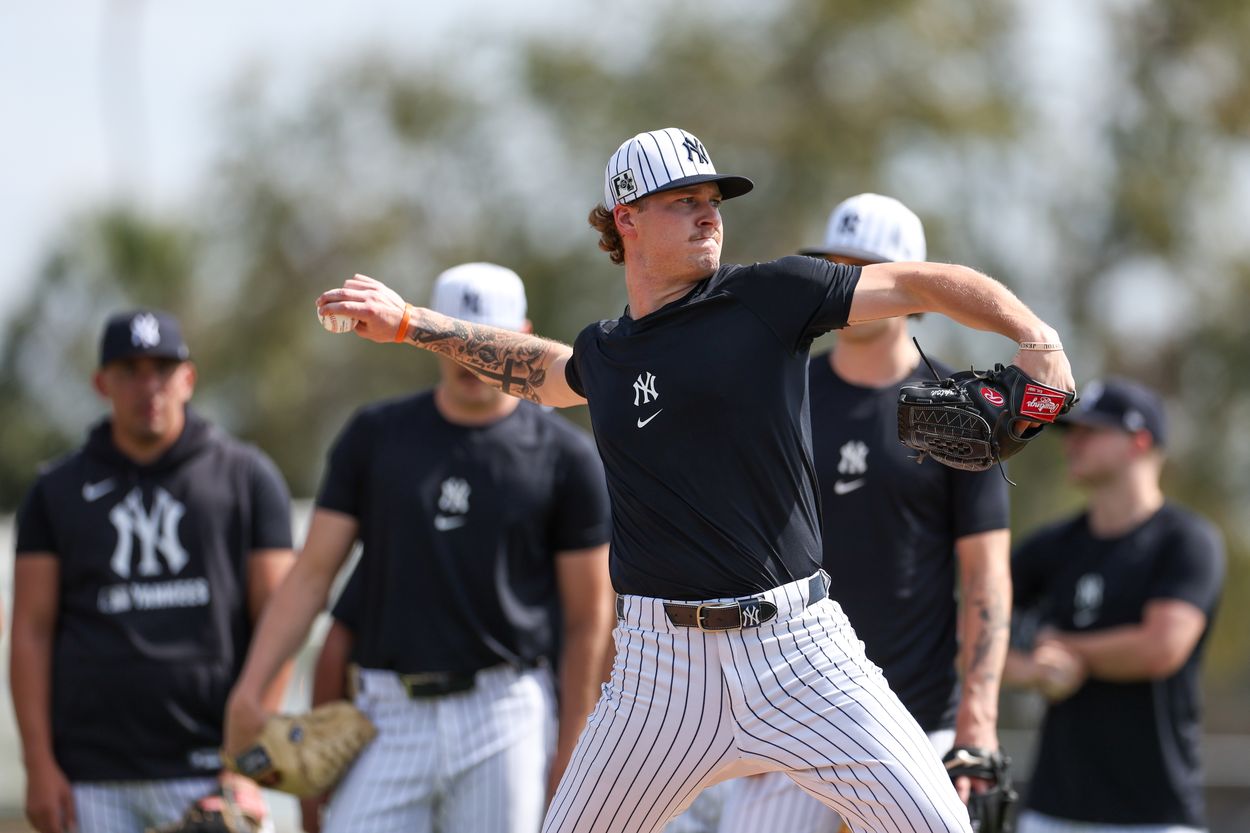
Moved down five spots from his pre-season ranking, Chase Hampton‘s drop is entirely because of the Tommy John Surgery he underwent during Spring Training. There is something resembling a positive here: Hampton finally had his elbow issues cleaned up with this procedure after spending most of last season recovering from an elbow problem. He is expected to return at some point during the 2026 season, and he’ll be just 24 years old when that season begins. The talent isn’t the problem here, and that’s why Chase Hampton finds himself in the top 10 while sitting on the IL.
His fastball sits between 92-94 MPH with tons of vertical ride, being released from a lower armslot and flatter arm angle than the average right-handed pitcher. This combination of abnormal release heights and an excellent vertical ride makes it a plus pitch, and his secondaries grade out as excellent pitches as well. He has a sweeper, curveball, and cutter to help complement that four-seam fastball, so arsenal depth shouldn’t be an issue for him at the next level. Injuries are a real reason that some guys never make it, but I’m hoping that Hampton can recover and get back to his top-100 form.
#9: Edgleen Perez – Previous Rank: #9
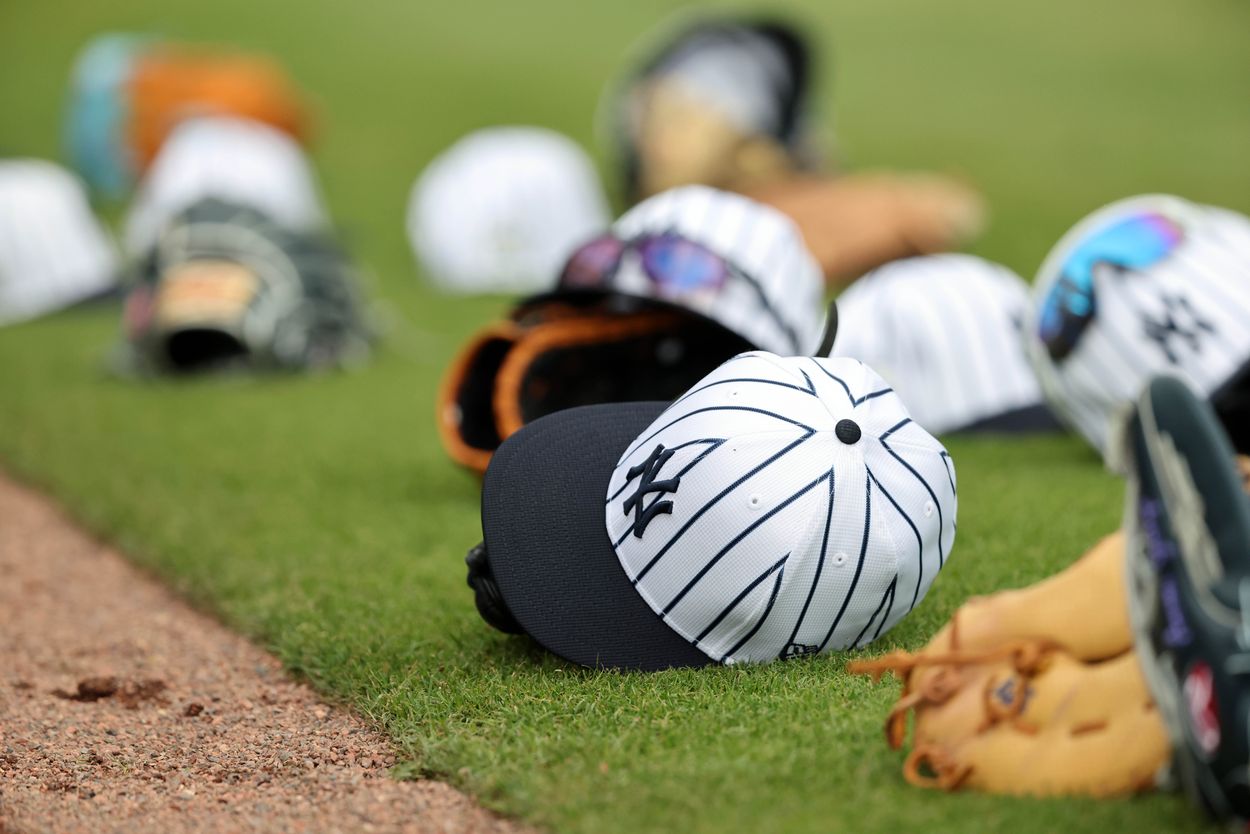
Edgleen Perez has an unimpressive .292 wOBA in his Single-A debut thus far, but the underlying metrics suggest he’s getting unlucky, and the defense behind the plate is remarkable. His .336 xwOBA and 22.7% BB% are good for a 19-year-old who is still growing into his body, but the game power has lagged behind, and he is at risk of dropping on this list a bit if he doesn’t show it. The decision to rank Perez this aggressively is rooted in my belief that elite defenders at premium positions are usually productive big leaguers unless their bat is truly terrible.
The plate skills and contact rates are good enough to believe that Perez should be able to hold his own with below-average game power, but so far, we’ve seen bottom-of-the-barrel game power. The raw power numbers indicate he should have a higher SLG%, with a 10.8% Barrel% in his first month of Single-A action, which could lead to better results down the road. His arm behind the plate is incredible, his framing abilities are advanced for his age, and the Yankees have an excellent track record at the position that cannot be ignored in this conversation.
#8. Rafael Flores – Previous Rank: #12
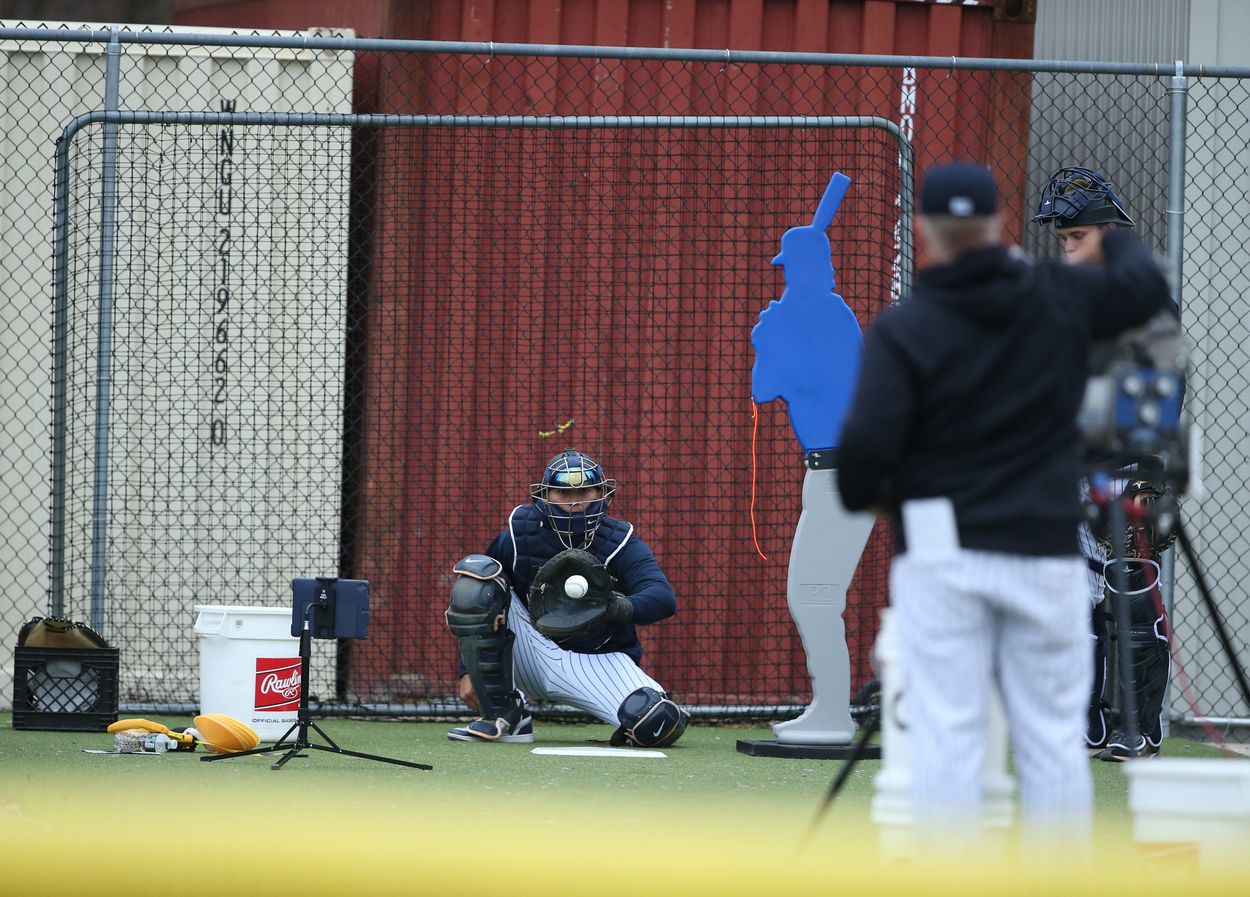
Rafael Flores has struggled with his strikeout rates early in 2025, but the power and production have remained excellent to this point. The graduations of both Will Warren and Jasson Dominguez, coupled with Thatcher Hurd and Chase Hampton dropping in my ranking due to injury, have fueled this rise into the top 10 for Flores. Don’t confuse this for a top-10 ranking by default, Rafael Flores has 70-grade raw power, has his average EV (93.5 MPH) and Max EV (115 MPH) rivaled the likes of Spencer Jones last season.
Defensively, there are still real concerns with Rafael Flores’ game behind the dish, but his framing has steadily improved, and I think he can stick behind the plate. Flores has become one of the best hitters at the Double-A level with the power to become a middle-of-the-order bat if the contact rates don’t drop too low. He has the momentum to get promoted to Triple-A before the All-Star Break, and since he’s Rule 5 eligible this winter, I wonder if the Yankees will entertain an MLB call-up given their need for right-handed power.
#7: Cam Schlittler – Previous Rank: #13
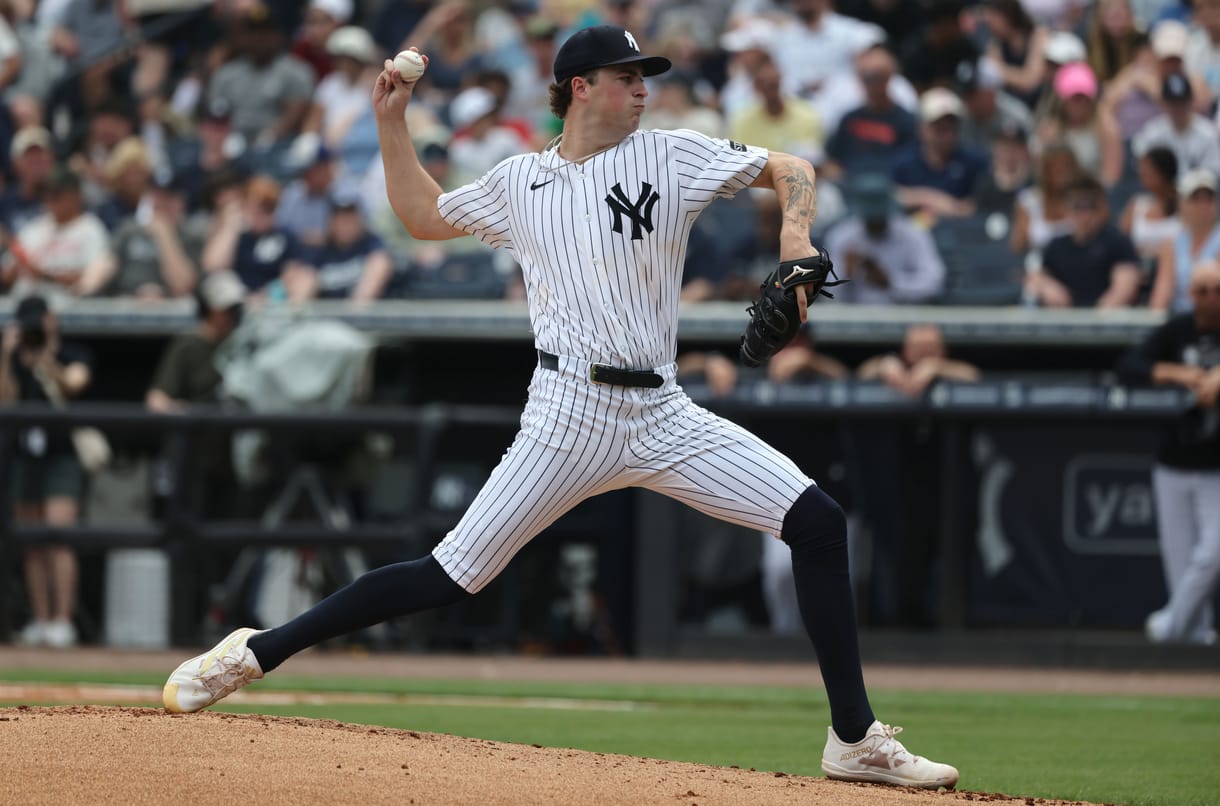
Cam Schlittler has enjoyed an excellent start to his 2025 season, as he finds himself in Double-A to start the year after a mid-season promotion last year. His fastball velocity has continued to climb, and that has led to me increasing Schlittler’s stock dramatically, topping out at 98.8 MPH in a home start last week. He does tend to allow quite a few hits, but in watching his starts, you’ll see sloppy defense inflates the number of hits allowed in some games. Somerset is 22nd in Defensive Runs Prevented on Baseball Prospectus, which matches the eye test on games pitched by Schlittler.
His four-seamer is sitting 95 MPH with solid vertical ride, but his tall frame and high release height make this pitch more of an average offering than a dominant one. Schlittler’s fastball does play an important role as a damage prevention pitch and as a way to establish the top of the zone, setting up his wicked curveball and sweeper, which can help get righties and lefties to chase out of the zone. Cam Schlittler also has a tight cutter that can get some soft contact and work as a bridge between his heater and breaking balls, he could be a solid backend starter with upside for a contender.
#6: Elmer Rodriguez-Cruz – Previous Rank: #19
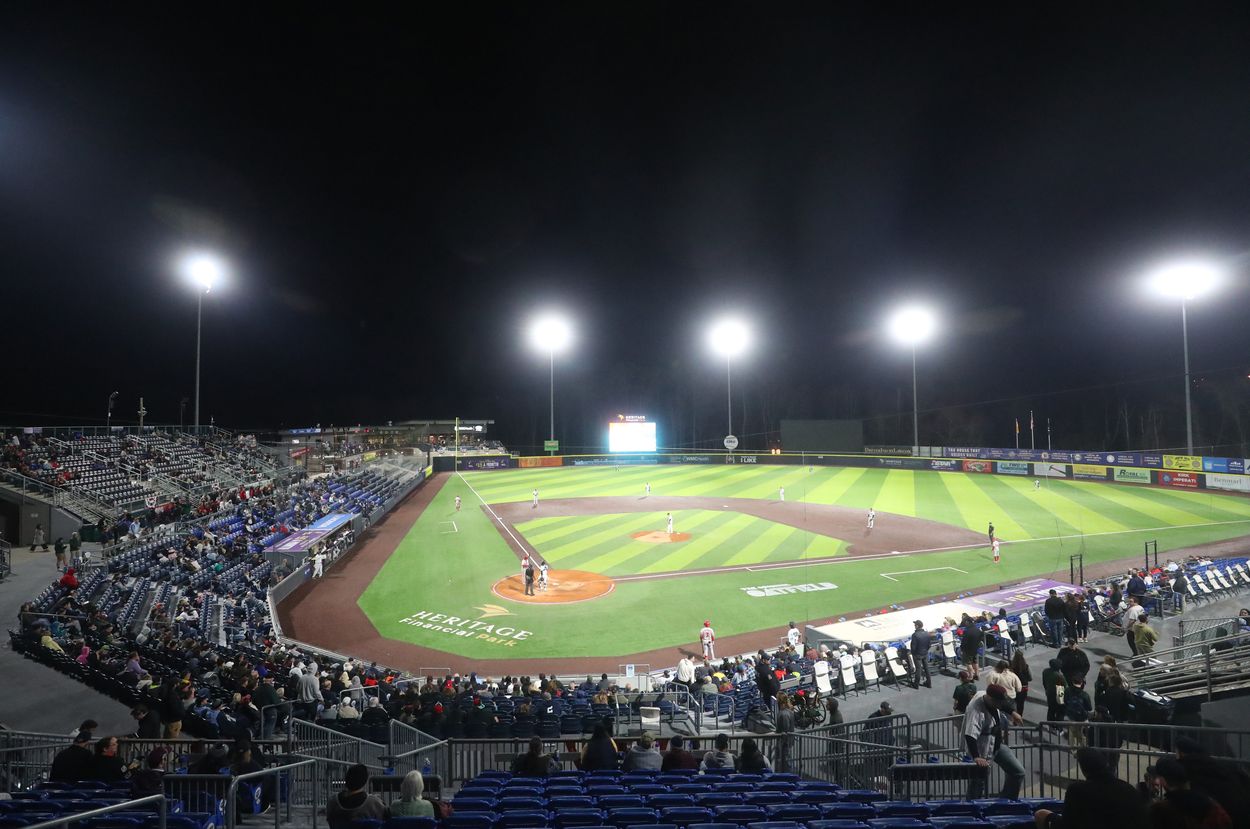
Elmer Rodriguez-Cruz is one of the prospects in the Yankees’ organization whom I gave an aggressive bump to after the first month of the season. The Yankees acquired him from the Red Sox, and while last season was impressive, there were more signs indicating a reliever outcome than people gave it credit for. A lack of strike-throwing abilities coupled with the Red Sox’s willingness to trade him for Carlos Narvaez, who likely wasn’t going to make the Major League roster, made me hesitate to buy into the hype before Spring Training.
Seeing him throw in Tampa, the buzz was that he had impressed many in the organization, and so far, we’ve seen that offseason chatter materialize in Hudson Valley. He’s got a mid-90s four-seamer and sinker to go alongside his sweeper, splitter, and curveball. The refinement of his splitter and the development of that sweeper have gone a long way for the right-hander, who has been a swing-and-miss machine, throwing more strikes than he did last season. If his strike-throwing abilities are legit, we could be looking at a middle-of-the-rotation arm.
#5: Spencer Jones – Previous Rank #6
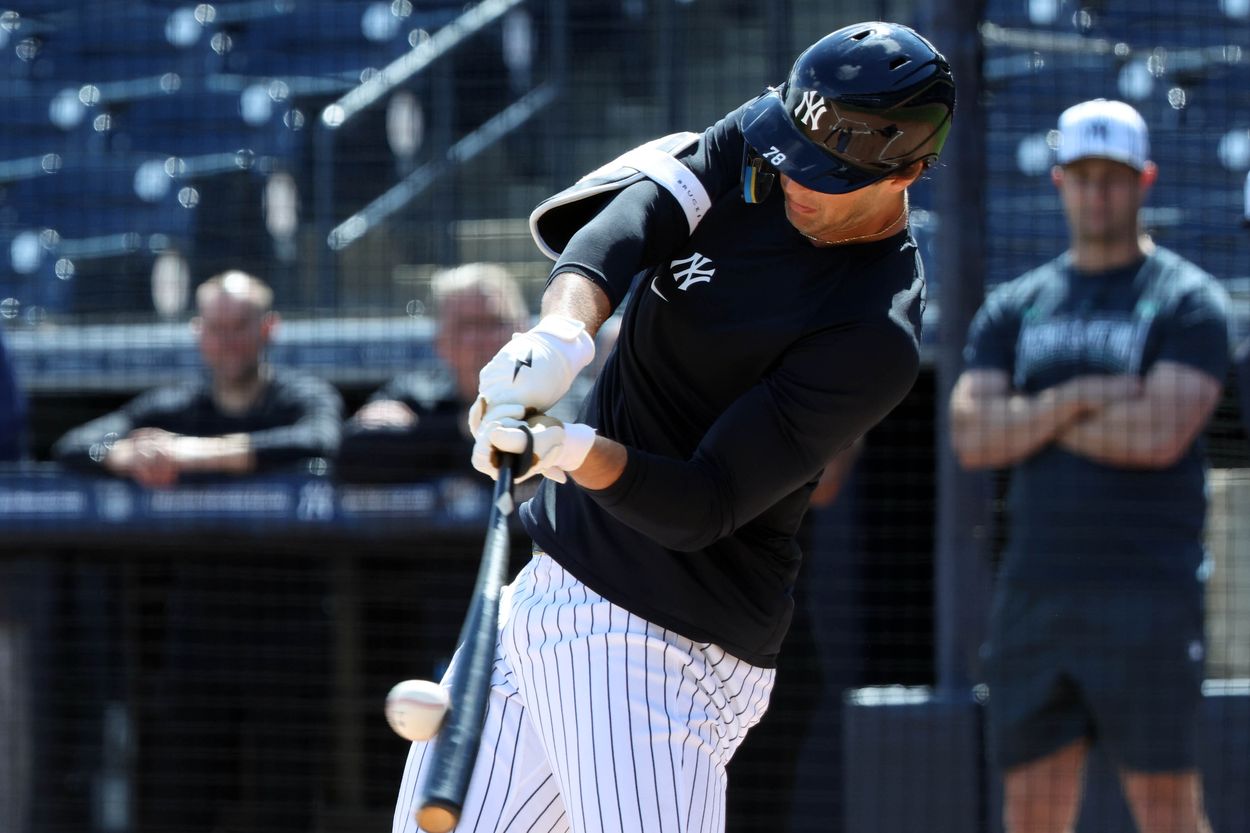
The weird new stance that Spencer Jones has is working; he’s chasing less and hitting for way more power, resulting in a high walk rate and a league-leading eight home runs to start the season. It took him nearly three months to hit his eighth home run of the season a year ago, and he has yet to crack the 20 HR threshold in a season since going pro. These improvements stem from better swing decisions and more loft in his swing, and while his strikeout rates are still high, the important thing is that they’re lower than last year while also lifting the ball more.
A freak athlete who can be an excellent defensive centerfielder and swipe 25 bases in a season, Spencer Jones is capable of being a contributor in all facets of the game. His all-or-nothing approach at the plate can be frustrating to watch when he slumps, but that aforementioned defensive value should give him a longer leash. The Yankees have to either place Jones on the 40-man roster this winter or leave him exposed in the Rule 5 draft, which could open the door to some interesting conversations in 2026 if he dominates in Triple-A this season.
#4: Carlos Lagrange – Previous Rank: #15
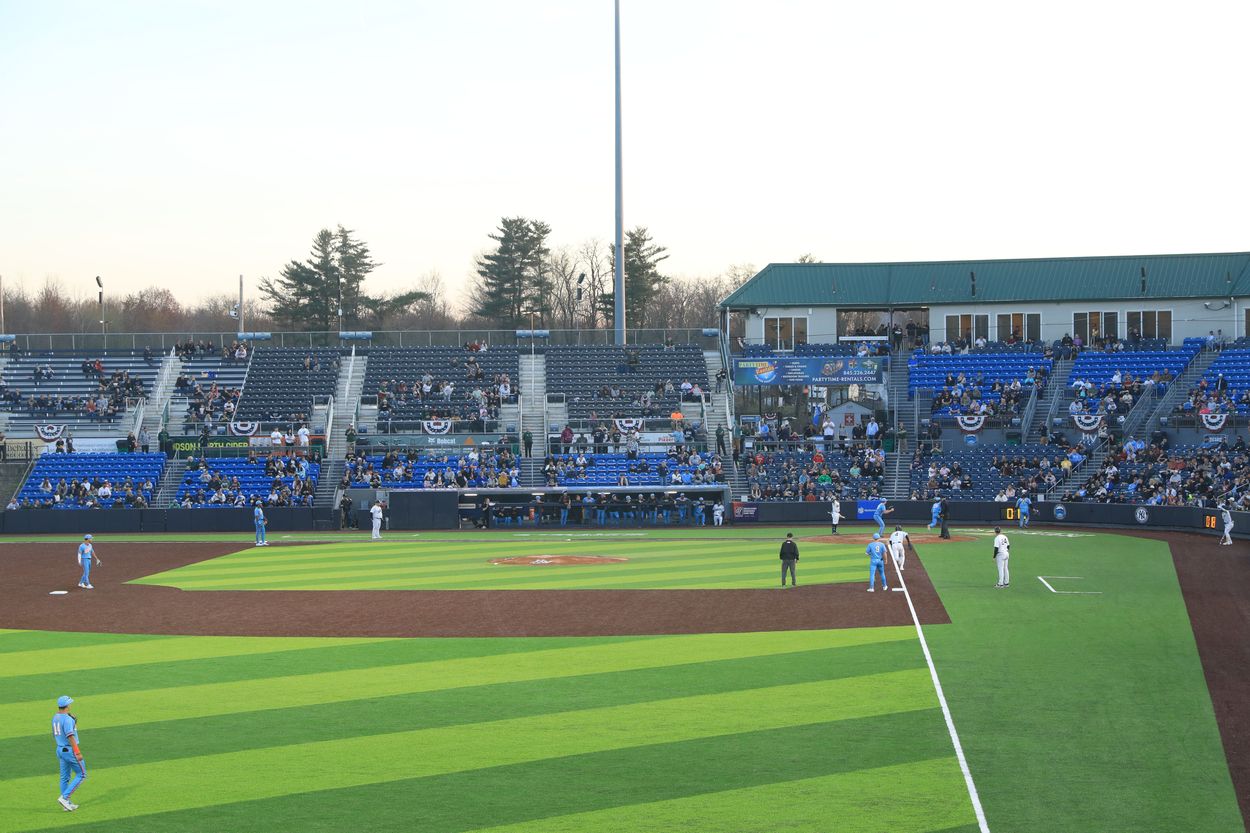
Carlos Lagrange is another Hudson Valley starter who is making a massive jump on this list, and there aren’t a lot of people who are truly aware of how good he is. The stuff is utterly ridiculous; his fastball sits at 98-99 MPH and can top out at 102, which are some of the biggest indicators of big-league viability. Another huge indicator of MLB viability is K-BB%, and Lagrange has an excellent 32.9% mark in that statistic, as he’s both striking out everyone in sight and also attacking the zone more than he has at any point in his pro career.
He’s landing 67.5% of his pitches for strikes compared to just 55% of them last year, and he’s developed a strong arsenal of secondary pitches to complement his fastball. Lagrange has a sweeper and a gyro slider he can throw for swings and misses, and his changeup has been a usable pitch for him at the professional level. The Yankees still have their work cut out for them when it comes to developing Carlos Lagrange, who has dealt with injuries and command issues for years now, but the upside is immense, and the early returns are remarkable.
#3: Ben Hess – Previous Rank: #3
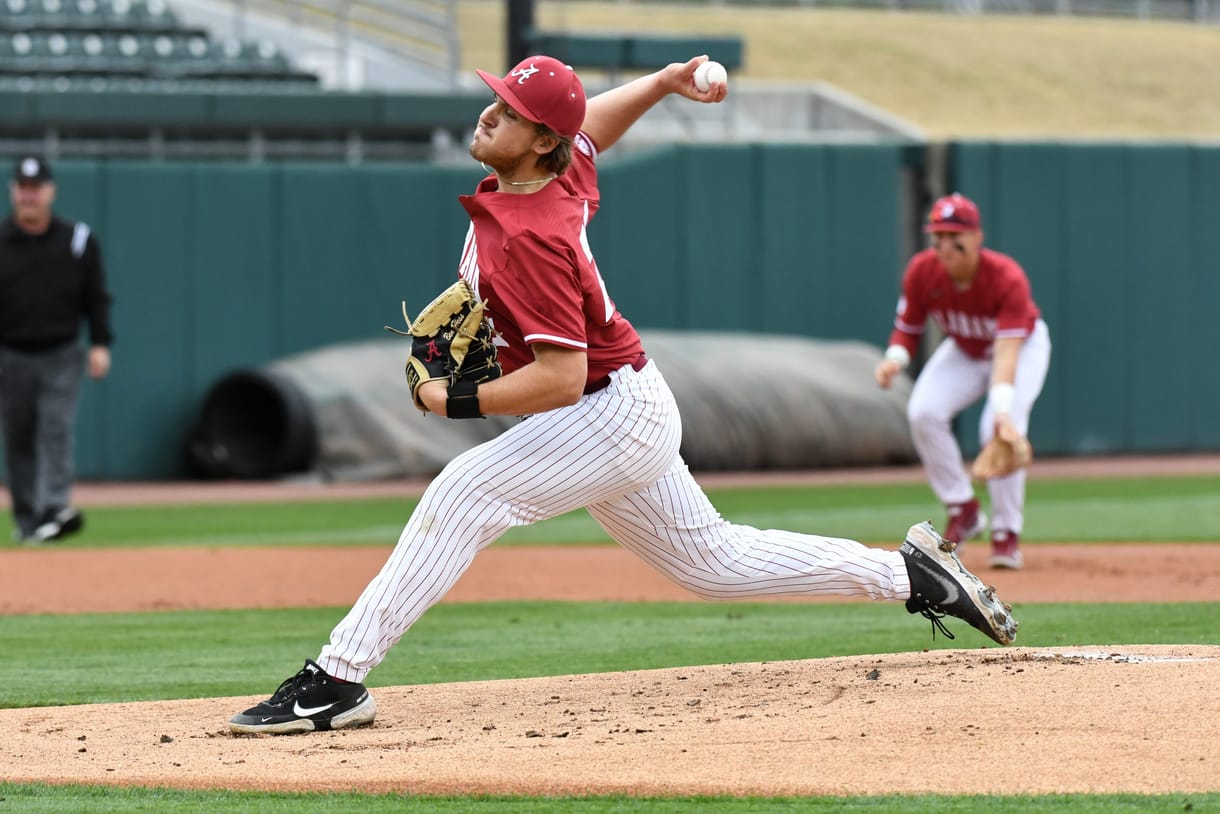
Ben Hess has remained stagnant on this list despite Jasson Dominguez’s graduation, but that is not because I’ve been disappointed with his play. His walk rate is high, but he does throw strikes a little over 63% of the time, which isn’t unbearable, and the stuff is utterly elite. The fastball has tons of carry from a low release height, and the velocity should climb more from the 91-93 we’ve been seeing early on. Even if it doesn’t improve, the fastball is a plus pitch, and his secondaries are just as nasty.
His curveball generates a ton of vertical depth with good lateral movement, having over 15 MPH of velocity separation off of his fastball. The changeup has tons of horizontal movement and vertical depth as well, and he ties this arsenal together with a slider that he’s slowly getting a better feel of. This repertoire is good enough to project a frontline starter outcome if the velocity gets back to the 93-94 MPH we saw in college, but he has to continue sharpening his command to avoid the blow-up innings he’s been prone to in Hudson Valley.
#2: Bryce Cunningham – Previous Rank: #4
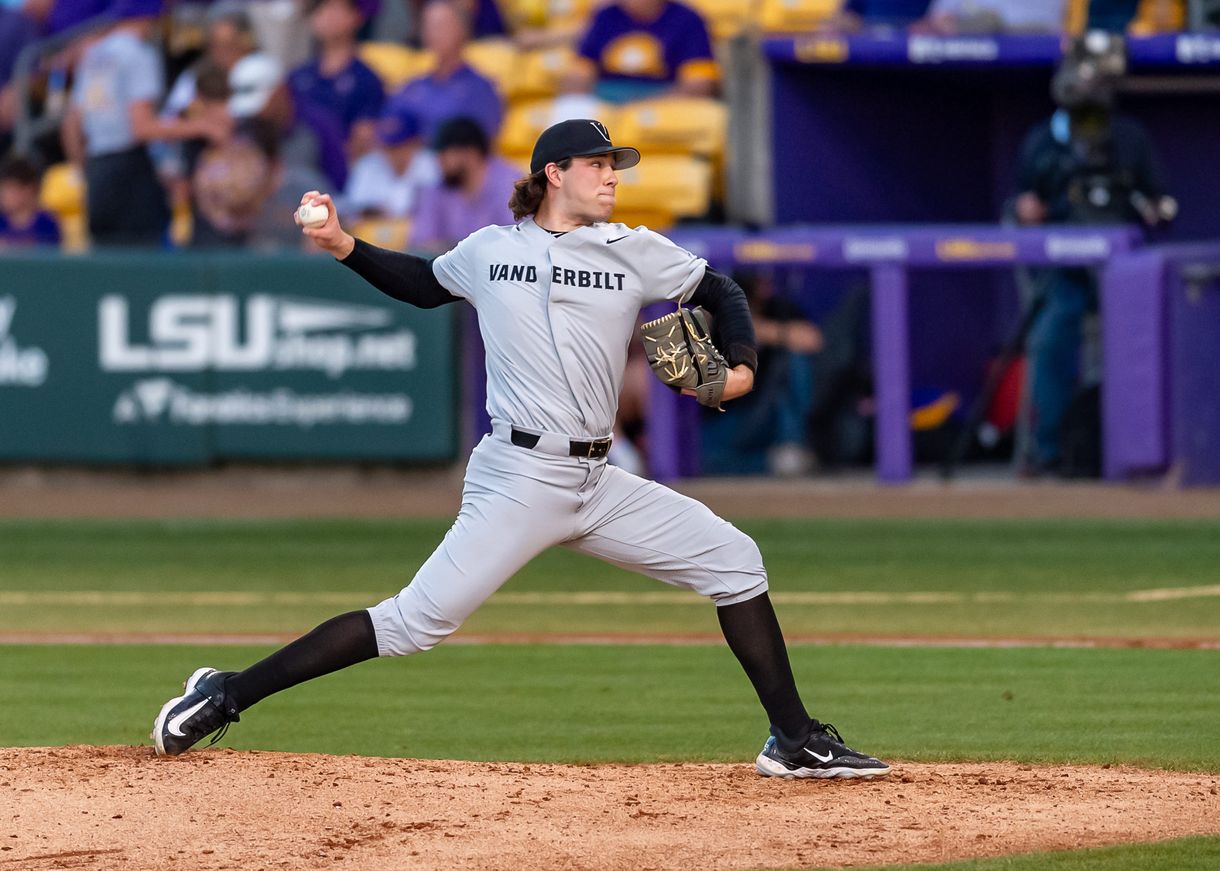
Bryce Cunningham has been everything the Yankees could have hoped for and more through his first four starts with the Hudson Valley Renegades. The right-hander is averaging 17-18 inches of ride with seven feet of extension on his fastball, which has averaged a solid 94 MPH despite the cold conditions the Renegades have played in. That’s a plus fastball, and it’s paired with a power changeup that has tons of spin that can get strikeouts against lefties or righties. His slider and curveball complement that two-pitch combination well, and have been better than I expected.
Cunningham is built to be a starting pitcher at the Major League level; his 6’5 frame, strong body, long arms, and smooth delivery are easy to dream on, and I think the world of him. He’s a workhorse, averaging six innings per start, and he’s thrown 70.4% of his pitches for strikes as well. The Yankees might have a top-100 prospect on their hands, and if we’ve learned anything about Sam Briend and Matt Blake, it’s that they’re remarkable at getting the most out of a pitcher. I ranked him ahead of the other HV starters, not because of their flaws, but because Cunningham is just that good.
#1: George Lombard Jr. – Previous Rank: #2
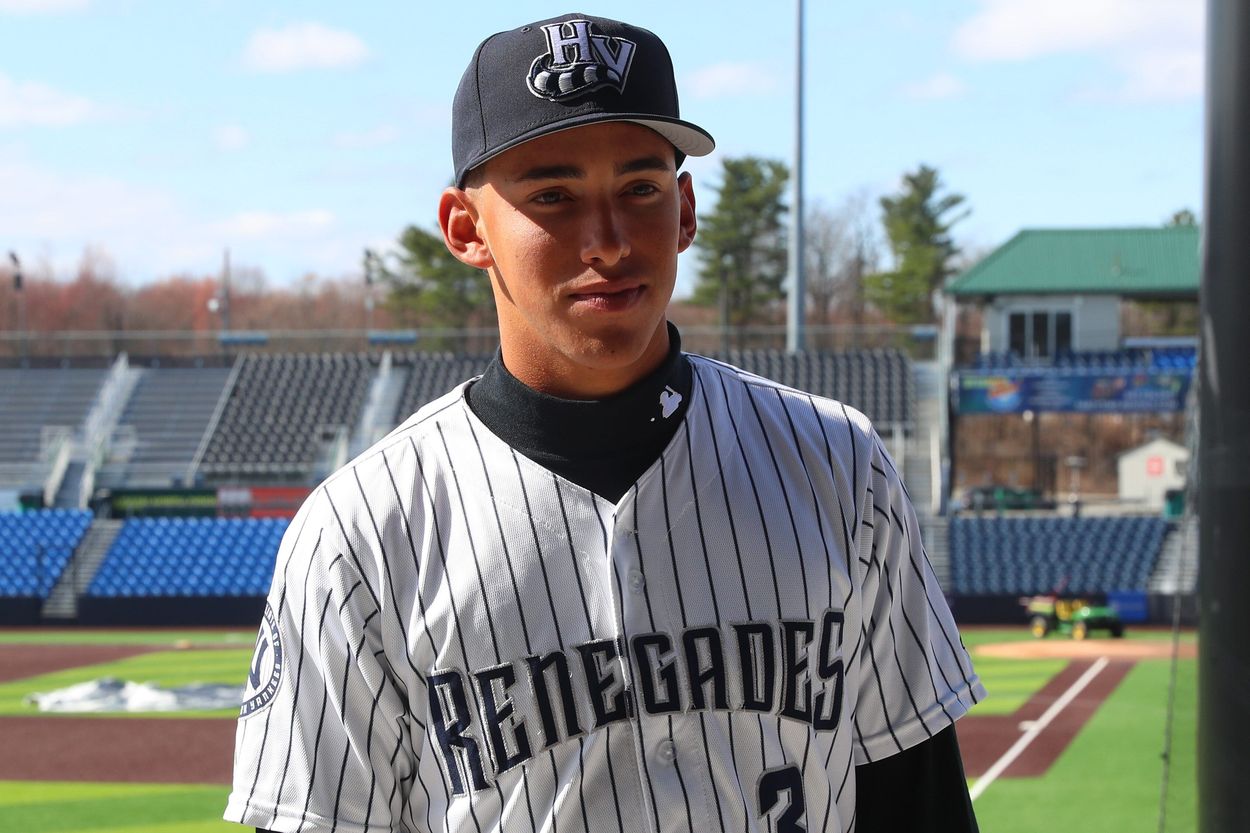
George Lombard Jr. has been one of the best hitters in the South Atlantic League up to this point, doing an excellent job getting on base while being an excellent baserunner. His swing looks much-improved from last season, and he’s added some muscle, which has made him a much bigger threat to do damage on contact. The plate skills are remarkable, and it’s reflected in his walk rate, and his defensive chops at shortstop lead me to believe he could be a premium contributor on both sides of the ball.
Oftentimes, a prospect is measured solely by what they are and what scouts believe they can become on the field, but Lombard’s maturity and work ethic off the field are key parts of this evaluation as well. The strides he made this winter are a byproduct of that tenacious work ethic, and that matters when you’re the top prospect for the Yankees, where pressure and expectations are a formality. George Lombard Jr. has a unique opportunity to get some consideration for a top-10 placement in prospect publications, and he might be a big leaguer before the conclusion of the 2026 season.